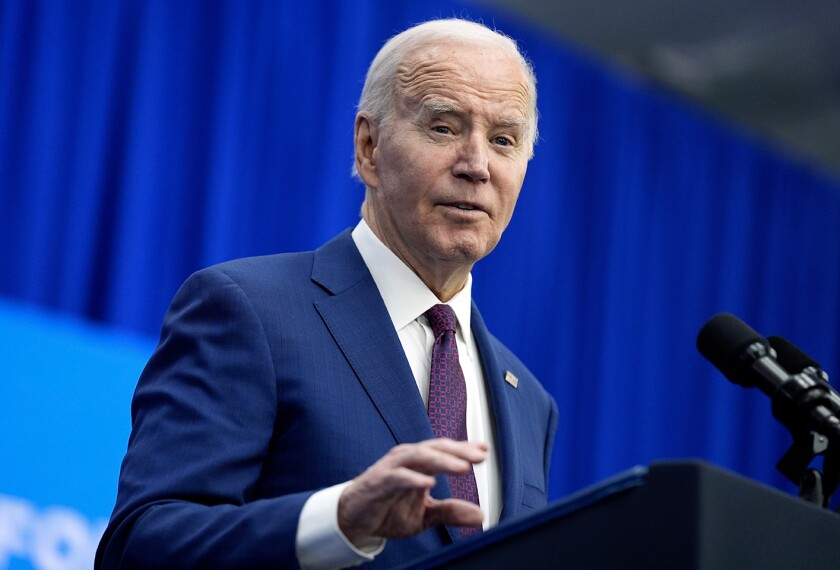Spending bills emerging in the House and the Senate would provide more money for the Department of Education than President Bush has requested, but less than the GOP-controlled Congress promised in its budget resolution this spring.
As usual, the largest dollar increases are aimed at big programs such as special education state grants, the Title I program for disadvantaged children, and Pell Grants for needy college students. Also, the fiscal 2004 appropriations bills in both chambers reject President Bush’s call to substantially scale back spending on after-school programs.
“I think we did a good job, given the parameters of the total amount,” Rep. Ralph Regula, R- Ohio, the chairman of the House Appropriations Subcommittee on Labor, Health and Human Services, and Education, said in an interview. “We had to make some choices, and in making those choices, we gave education a priority.”
Leading Democrats, though, made clear that they believed the legislation would provide insufficient aid for education.
Both the House and Senate appropriations committees passed Republican-conceived bills late last month that detail spending totals, program by program, for the departments of Education, Labor, and Health and Human Services. The House bill passed the full committee June 25 on a party-line vote of 33-23.
Meanwhile, most Democrats voted in favor of the Senate Appropriations Committee’s bill, even while they made clear they intended to pursue spending increases when the bill reaches the floor.
At press time, a floor vote was not scheduled on either bill. Both chambers went on recess late last month and expected to return this week.
Overall, the House bill would provide $55.4 billion in discretionary money for the Department of Education, a $2.3 billion increase—or 4.3 percent—over the current fiscal year, which ends Sept. 30. The Senate bill contains slightly less, $54.6 billion, or a 2.8 percent rise.
For his part, President Bush proposed this year to roughly freeze Education Department spending at $53.1 billion.
Key Democrats griped that recent tax cuts pushed by Mr. Bush and GOP lawmakers left less money for education and other items.
“Budgets reveal priorities,” Rep. David Obey of Wisconsin, the top Democrat on the House Appropriations Committee, said in a statement last month. “And this bill more than any other demonstrates that the Republican Party in Congress is willing to put huge new tax gifts for the most comfortable in our society ahead of every other economic and social value.”
Rep. Obey noted that the House appropriations bill’s funding levels for both Title I and special education fall short of what was put forward in the Republican-backed budget resolution earlier this year.
The budget resolution called for a $3 billion increase in overall education spending for fiscal 2004, though that figure was not legally binding on lawmakers. It also outlined spending levels for some specific programs. For example, it called for a $1 billion increase for Title I and a $2.2 billion increase for state grants under the Individuals with Disabilities Education Act. (“Budget Blueprint Sets $3 Billion Education Hike for 2004,” April 23, 2003.)
Neither figure was fully met in the House and Senate appropriations bills.
Mandatory Spending?
Sen. Tom Harkin of Iowa, the ranking Democrat on the Senate Appropriations subcommittee that oversees education spending, contended that the shortfall between the budget resolution and the bills as they stand shows the need for Congress to shift special education spending from the discretionary to the mandatory side of the federal budget. Under such an arrangement, IDEA increases could be locked in, freed from the annual appropriations struggle.
“Senator [Arlen] Specter [R-Pa.] did the best he could with an inadequate allocation,” Mr. Harkin said of the subcommittee’s chairman. “There are too many competing priorities in the discretionary-appropriations process, and we need to prioritize IDEA once and for all by making it mandatory.”
President Bush and leading Republican legislators have opposed making special education funding mandatory. But the opposition comes not only from the GOP. Rep. Obey has long said he opposes such a move as well.
On other fronts, the House and Senate bills as drafted suggest that Mr. Bush is unlikely to make much headway in his efforts to scale back funding, or abolish it altogether, for some programs. The president’s budget request called for eliminating some 45 Education Department programs, shifting the money instead to what Mr. Bush deems higher-priority programs at the agency.
But many of the targeted programs enjoy bipartisan support, and the House and Senate bills reflected relatively few of Mr. Bush’s cutbacks. Some budget experts predict that by the end of the appropriations process, very few, or even none, will be zeroed out.
For example, the House bill would provide $170 million for rural education, $32 million for school counseling, and $235 million for the Comprehensive School Reform Demonstration Program, all line items that carried zeroes on Mr. Bush’s budget request.
Among the most criticized of the president’s requests was to cut spending on the $1 billion 21st Century Community Learning Centers program, which pays for after-school initiatives, by about $400 million.
Both the House and Senate bills rejected that cut, and proposed instead to keep the funding at the current level.
“I think the after-school programs are useful,” Rep. Regula said in explaining that decision. “I’ve done some investigation of my own, particularly cities that have Boys and Girls Clubs and YMCAs and church groups, and they feel that these are worthwhile programs.”




